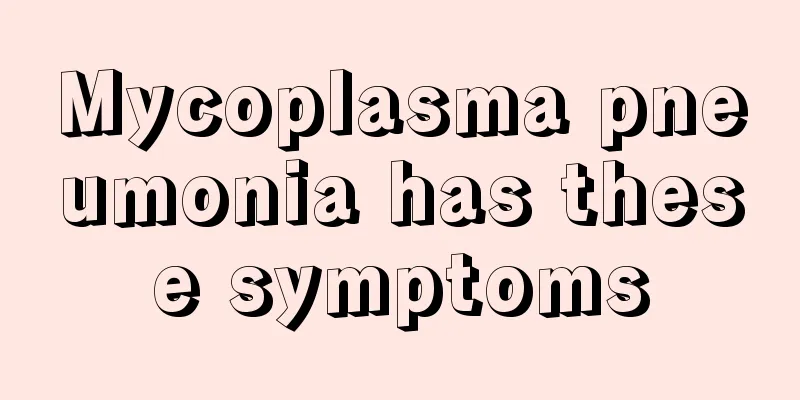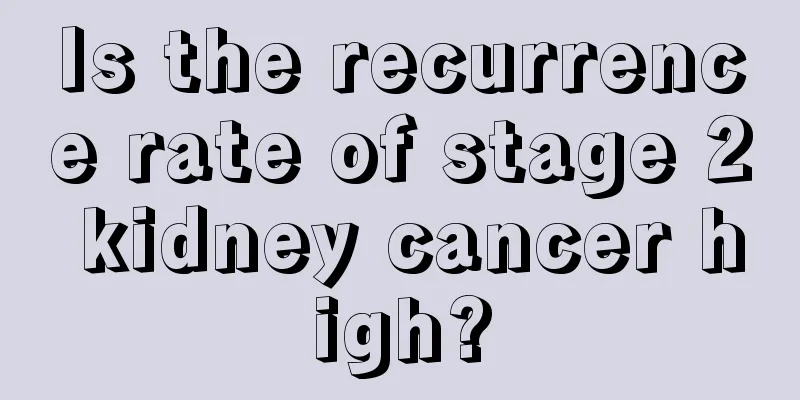Is cerebral hemorrhage serious?

|
Cerebral hemorrhage is a very serious disease. After suffering from cerebral hemorrhage, many patients will suffer serious damage to their heart and blood vessels. Moreover, it usually occurs in our brain. When bleeding occurs, it will cause compression of our nerves, impair our consciousness, and even cause nausea and vomiting. When necessary, craniotomy is required for treatment. So is cerebral hemorrhage serious? Cerebral hemorrhage refers to massive bleeding caused by rupture of blood vessels in the brain parenchyma. About 80% of it occurs in the cerebral hemispheres, mainly in the basal ganglia, and the remaining 20% occurs in the brainstem and cerebellum. Causes Hypertension and arteriosclerosis are the main factors of cerebral hemorrhage. It can also be caused by congenital cerebral aneurysms, cerebral vascular malformations, brain tumors, blood diseases, infections, drugs, trauma and poisoning. When patients with the above changes experience a sharp rise in blood pressure due to emotional excitement, excessive physical exertion, etc., which exceeds the pressure that their blood vessel walls can withstand, their blood vessels will rupture and bleed, forming bleeding foci of varying sizes in the brain. symptom This disease is more common in middle-aged and elderly people with a history of hypertension and those over 50 years old. It usually occurs when one is emotionally excited, working or active, or extremely cold; in a few cases, it may occur during rest or sleep. More common in cold seasons. (A) Whole brain symptoms. 1. Disturbance of consciousness: Mild cases are restless and confused, while severe cases usually enter a coma within half an hour, with the eyeballs fixed in the middle position, flushed or pale face, loud snoring, sweating, urinary incontinence or urinary retention, etc. 2. Headache and vomiting: Patients with clear consciousness or mild disturbance of consciousness may complain of headache, which is more severe on the side with the lesion. Patients in confusion or light coma may touch the side of the head with the healthy hand on the side with obvious percussion pain in the temporal area on the side with the lesion, and may also be forced to position the head towards the side with the lesion. Vomiting is common and is mostly projectile. The vomitus is stomach contents, mostly brown. Hiccups are also quite common. 3. Decerebrate rigidity and convulsions: If the amount of bleeding is large, breaks into the ventricles and affects the function of the upper brainstem, paroxysmal decorticate rigidity or decerebrate rigidity may occur. 4. Breathing and blood pressure: Patients generally breathe faster. Those with severe conditions breathe deeply and slowly. When the condition worsens, the breathing becomes fast and irregular, or presents as tidal breathing, sighing breathing, double inhalation, etc. Unstable and gradual decrease in blood pressure are signs of circulatory center failure. 5. Body temperature: High fever occurs immediately after bleeding, which is a sign that the hypothalamic temperature regulation center is damaged by bleeding. 6. Meningeal irritation signs. |
<<: The brain has no thinking ability
>>: Left middle cerebral artery occlusion
Recommend
What are the classifications of Enterobacteriaceae?
Enterobacter belongs to the Bacteria family, and ...
Do curtains contain formaldehyde?
Any family cannot do without curtains. With the i...
How much sleep does a 50-day-old baby need?
The body of a baby around 50 days old is still ve...
Pustular acne around the mouth
Acne is a common skin disease in life. It mostly ...
How to judge the height of the hairline
The height of the hairline directly affects the o...
Can lotus seed heart cure insomnia? Detailed explanation of the effects of lotus seed heart
High work pressure is a true portrayal of many pe...
How often should you change your toothbrush?
Oral health is related to many factors, such as h...
Can drinking strong tea help you sober up?
When socializing, many male friends have to drink...
What is the effect of raising your legs
When exercising, many people will raise their leg...
What are the symptoms of esophageal cancer before death in the late stage?
What are the symptoms before death from esophagea...
Is it good to drink black tea when you have a cold
There are many kinds of Chinese tea, among which ...
Things you can't eat for kidney stones
The formation of kidney stones has a lot to do wi...
What tests should I do for chest pain
In life, if we always have chest pain symptoms fo...
What is the disease of bile sucking meat
Bile polyps are also called gallbladder polyps, w...
What is the reason for acne on the neck lymph nodes
Nowadays we all pay great attention to our appear...









